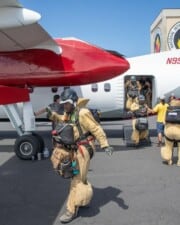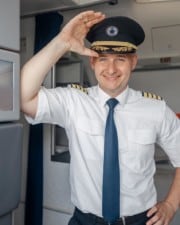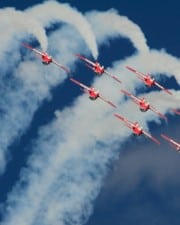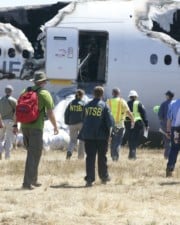You may have heard the term “general aviation.” It sounds boring, doesn’t it? It’s a shame, because general aviation is one of the coolest, most varied, and exciting types of flying.
Table of Contents
What is General Aviation?
TLDR – General aviation, or GA, is a term that encompasses all types of aviation besides military and commercial airlines. It includes many different business models and all private flying. While it might be the last sort of aviation that many people think of, GA encompasses most of the world’s flying.
ICAO, the UN’s International Civil Aviation Organization, defines general aviation as all civil aviation other than scheduled or non-scheduled airlines. In other words, it’s everything in aviation that isn’t military or airline.
According to one website, there are over 440,000 GA aircraft in the world today. Around half of those, 212,000, are located in the US. For a variety of reasons, the United States has the most GA activity of any country.
The term GA is used to refer not only to the aircraft operations but also to the businesses and airports that support them. Some airplanes might be called “GA aircraft,” and some airports might be called “GA airports.”
At general aviation airports, the primary hub of business is called an FBO, or fixed-base operator. FBOs can be thought of as the fuel stations of GA—they sell fuel, provide hangers and places to park, and offer services. They are the GA terminals, but many FBOs also rent planes, operate flight schools, or have mechanics on staff.
Examples of General Aviation
Perhaps the best way to understand the breadth of GA operations is to look at just a few examples of what GA is.
Charter or Air Taxi Operations
One of the larger business sectors in GA is that occupied by charter companies. In the United States, these companies operate under FAR Part 135. They own fleets of planes, usually business jets, and make them available to anyone who wants to fly somewhere. They are often used by business leaders who need to get between meetings fast or wealthy families going on vacation.

Charter companies sell an all-inclusive flight experience, much like the airlines do. You book your flight, and the company provides the plane and flight crew where and when you ask for it. All you do is hop in and enjoy the ride.
Some charter companies look different. Many operate helicopters, servicing oil platforms or busy metro areas. Some operate bush planes or seaplanes, taking hunters or adventurers into the wilderness.
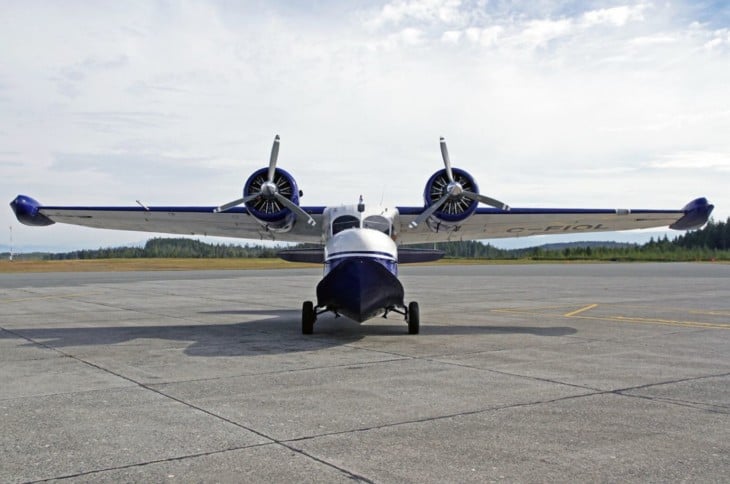
Corporate Flying
Corporate flying may seem similar to charter flying, except the planes are owned by a company to transport its executives and employees around. Large corporations often have their own flight departments, with fleets of aircraft ranging from small pistons or helicopters to fancy biz jets.
Cargo Flights
Cargo is carried all over the world 24/7. There operators dedicated to flying cargo, all of which fall under the “general aviation” veil. Think of FedEx or UPS. These are major airlines in terms of flight operations.
There are also hundreds of smaller cargo operations worldwide that help these major players move their packages. Cessna Caravans or Shorts aircraft are typical examples, though nearly any plane can carry some cargo.

These are familiar sights in areas where tourists congregate. What’s better than visiting the beach town than taking an air tour in a biplane? Or a helicopter ride over the Grand Canyon? These are all types of General Aviation.
Banner towing is another GA business, as are all other forms of aerial advertising, like skywriting.

Medevac Flights (“Lifeflight”)
All over the world, aircraft are used to move medical patients. In rural areas, airplanes and helicopters can get injured or sick people to help faster than any other method.
Helicopters can land right on the highway at the scene of accidents and evacuate the injured. On remote islands with limited medical facilities, planes can ferry patients to life-saving medical services with just a few hour’s notice.
Crop Dusting / Aerial Application
Crop dusting planes are used to drop pesticides and herbicides. These low-flying planes are common sights in agricultural areas. Crop dusting is one of the most dangerous flying in the world of aviation.
Flight Training
The pilots of the world need to learn to fly, so even airline pilots are intimately familiar with general aviation. Flight academies operate small, single-engine airplanes or helicopters that are inexpensive to operate. The skills required to fly these are not that different from the skills needed to pilot an airliner.
Flight training consists of building up hours of flight experience. There are many hours spent perfecting landings and long flights between airports learning to navigate and fly within the airspace system.
Aerial Observation
There are dozens of different types of aerial observation. Here are just a few.
Law enforcement departments use helicopters to track criminals and airplanes to watch for speeders on the open highway.
Power companies perform aerial surveys of their equipment and power lines, making sure there is no damage after storms and watching for trees that need to be trimmed.
Aerial photography is used in every industry, from real estate to advertising. It can be performed with fixed-wing airplanes or helicopters. TV news channels usually operate helicopters for traffic and news reporting.
Wildlife researchers count birds or other animals from the air, where they can get an idea of populations and migration habits.
After major natural disasters like earthquakes or hurricanes, first responders use aerial flights to survey the damage. They use what they see to figure out how to get help to those that need it most. Forestry officials in national parks use helicopters and planes to spot wildfires, and water bombers help put them out.

Private Flying
There are also many people who own planes. They might use them for business flights between meetings or jobs, but often they are just like another family car. Pilots take their families on trips for holidays or just to the next town for what they call the “$100 hamburger.”
Privately owned planes can be any sort of aircraft. Many owners build ultralights or kit planes at home. Some purchase production planes like Cessna’s or Pipers. It’s even possible to own and fly antique warbirds or jets.
Don’t forget, many enthusiast areas in aviation also fall into general aviation. Ballooning, gliding, or powered parachutes would all be called GA aircraft.
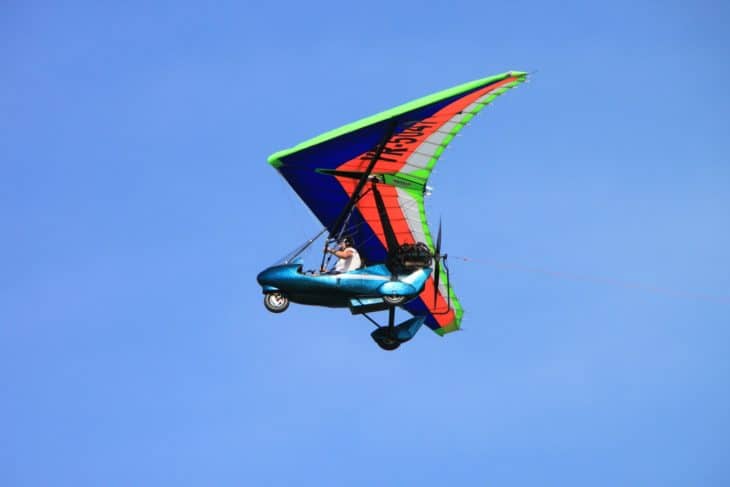
General Aviation vs. Commercial Aviation
Some people think of commercial aviation as operations for hire and general aviation as everything else, but this isn’t entirely true. Many businesses are operating in general aviation, and many commercial operations are performed. The difference is in the definition of the word “commercial.”
Most people define commercial to mean something that has to do with business—the transaction of money for a service or product. In aviation, though, commercial is a word used to reference the airlines. Commercial airlines are those that offer their product to the general public by selling tickets on their planes. Commercial airlines are technically called scheduled air carriers.
The word commercial appears in other places in aviation too. Pilots who are paid for their work, like crop dusters or flight instructors, need to have their commercial pilot licenses. They are technically flying a commercial operation when they go flying. But the public isn’t involved in this. That difference, of whether the public can fly on the flight, makes a flight a commercial operation.
Is General Aviation Safe?
Like all aspects of aviation, general aviation has an outstanding safety record. There are risks involved in any sort of flying, and general aviation is no different. Given the sheer number of flight operations that occur every day, the tiny fraction of accidents is very impressive.
But, flying is inherently dangerous. Flying is statistically more dangerous than driving. In an aircraft, most accidents can be headed off by sound judgment and good decision-making skills.
In 2018, 97 percent of all aviation fatalities occurred in the general aviation sectors. Since GA encompasses so many different operations and the airlines have such an excellent safety record, that is not surprising.
Why is General Aviation Important?
General aviation is something that few people have contact with. As such, many people fail to see its value to their communities. General aviation airports are economic engines for the areas they serve. The FBOs and other businesses employ many local workers, as do the airport authorities or government entities that oversee field operations.
Many communities are only served by GA airports. These fields provide medical evacuation and emergency relief flights. They also allow locals to travel via air, using charter companies or private flights, even if there is no commercial service to their airport. An airport is vital for business, and having a nearby GA airport can lure new businesses to set up shop in town.

Additionally, planes are always flying in and out. Visiting pilots and passengers rent cars, stay in hotels, and dine out. Most airports receive mail or cargo flights.
According to the NBAA, there are more than 5,000 public-use airports in the US, but fewer than 500 see airline service. They estimate that all the goods and services that make up GA, when combines, add more than $150 billion and 7.6 million jobs to the US economy.
Related Posts


